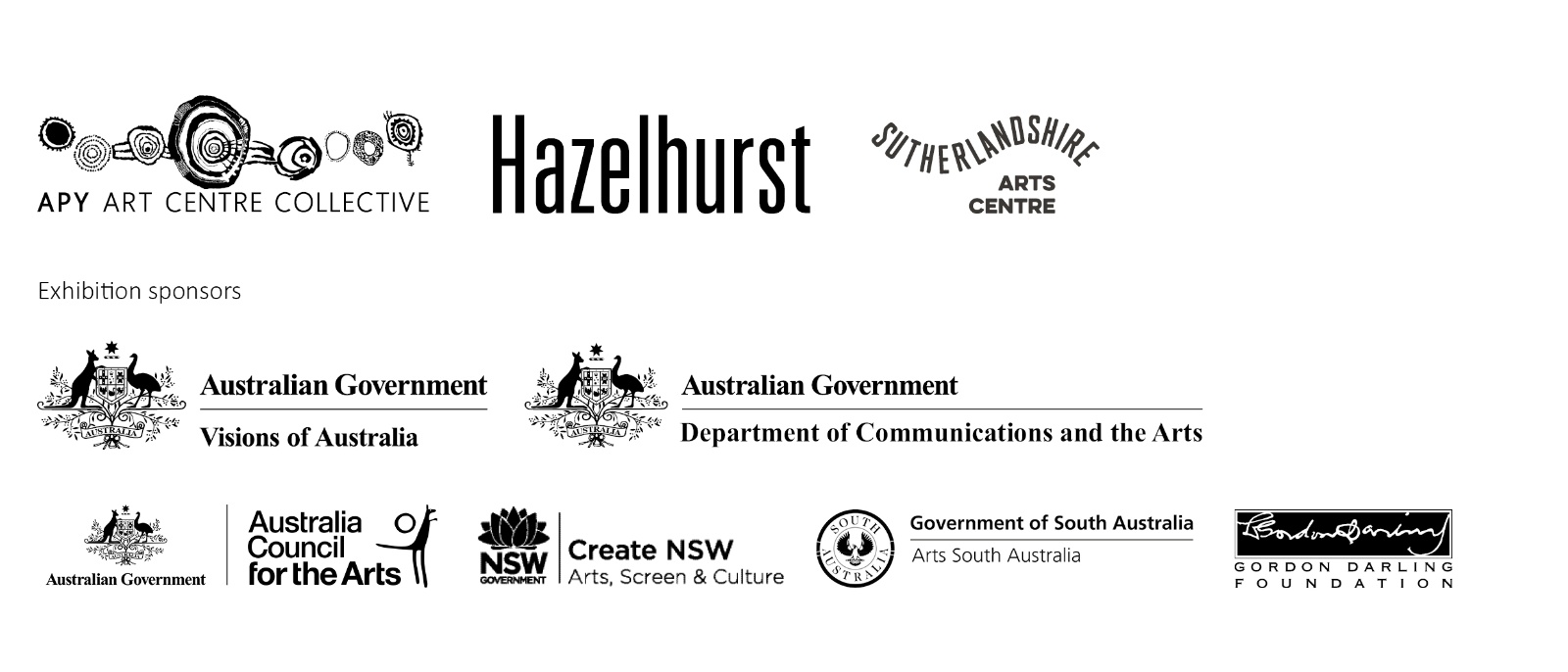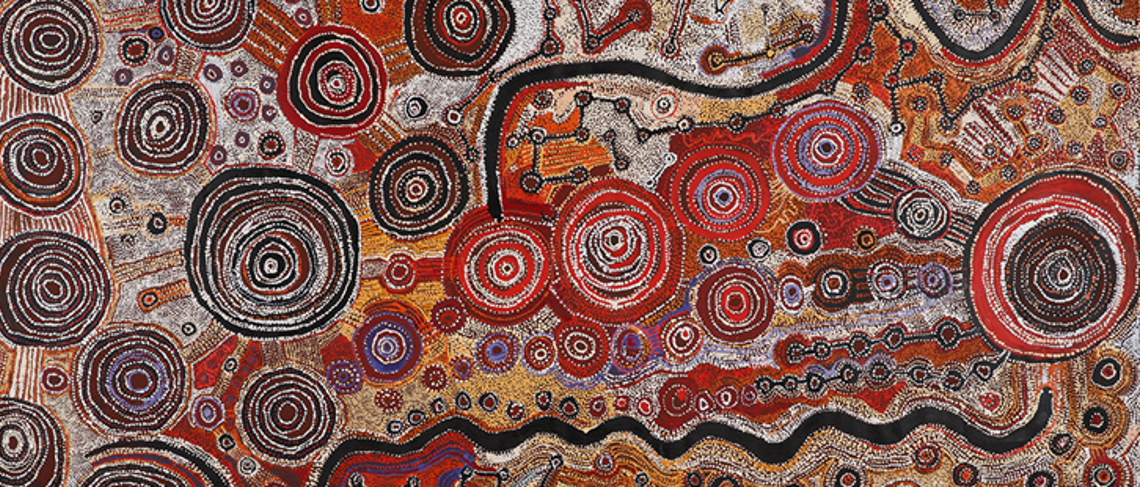Weapons for the Soldier
16 November – 8 February 2020
Official opening 6pm Friday 15 November 2019
A groundbreaking exhibition initiated by the young men of the APY Lands, bringing together Indigenous and non-Indigenous Australian artists to examine complex themes of weaponry, warfare, and protecting land and Country.
APY Lands Artists: Alec Baker | Eric Barney | Willy Kaika Burton | Pepai Jangala Carroll | Taylor Cooper | Sammy Dodd | Witjiti George | Rupert Jack | Kunmanara (Brenton) Ken | Ray Ken | Hector Mitakiki | Junior Mitakiki | Kamarin Mitakiki | Kunmanara (Willy Muntjantji) Martin | Peter Mungkuri | Vincent Namatjira | Kunmanara (Jimmy) Pompey | Keith Stevens | Derek Jungarrayi Thompson |Thomas Ilytjari Tjilya | Bernard Tjalkuri | Ginger Wikilyiri | Mick Wikilyiri | Mumu Mike Williams | Anwar Young | Frank Young |Kamurin Young | Young men of Amata
Invited Artists: Abdul Abdullah | Tony Albert | Brook Andrew | Lionel Bawden | George Gittoes | Shaun Gladwell | Richard Lewer | Uncle Charles ‘Chicka’ Madden and Jonathan Jones | Danie Mellor | Steaphan Paton | Ben Quilty | Reko Rennie | Greg Semu | Alex Seton
Weapons for the soldier was a project initiated by the young men of the Anangu Pitjantjatjara Yankunyjatjara (APY) Lands, Vincent Namatjira, Aaron Ken, Derek Thompson, Anwar Young and Kamurin Young, with support from senior artists Willy Kaika Burton, Ray Ken, Peter Mungkuri, Mumu Mike Williams and Frank Young. The title resonated with great force for the young Anangu men who initiated this pioneering curatorial project. It is a subject that senior APY artist Ray Ken has explored in his paintings throughout his career, and with his permission and encouragement, along with the support of other senior men who often paint weapons and stories of conflict, these younger men explored what it means to be a soldier today and to fight in order to protect your land and all it entails.
For this exhibition, Vincent and the young men connected with other Indigenous and non-Indigenous artists who they saw as peers. They decided to work on a project where they could connect with artists who have inspired them, on their terms, in a process where their commitment to cultural protocol was maintained. Vincent and the young men had each already examined war themes in their work to date: Vincent painting oft-overlooked Indigenous soldiers and Anwar and Kamurin Young committed to developing high level expertise in traditional weapons and working with other young men across the Lands to create a new iteration of the ongoing Kulata Tjuta [Many Spears] project which was initiated by senior artists Willy Kaika Burton, Kunmanara (Hector) Burton, Ray Ken, Kunmanara (Barney) Wangin, Mick Wikilyiri and Frank Young in 2010. This project offered an opportunity to hear Indigenous voices and to honour the tjilpies of the APY Lands.
Fighting for Country and deep connection to Country are recurrent themes that will be explored, evocative of both the broader tenets of the ANZAC legacy as well as the distinct position of Indigenous people within Australia who have long fought to maintain cultural strength and pride.
Developed during the ANZAC Centenary, the exhibition and these universal themes resonated among audiences across Australia. Weapons for the soldier fostered dialogue around multi-geographical and multigenerational fights for land, Country and freedom experienced by Australians, both Indigenous and non-Indigenous, as well as the Indigenous experience in Australian military history.
Image: Witjiti George and Taylor Cooper, Piltati and Malara: A story of love and war 2018 (detail), acrylic on linen, 200 x 300 cm. Courtesy the artists and Kaltjiti Arts.
Weapons for the soldier is a partnership project between the APY Art Centre Collective and Hazelhurst Arts Centre. The exhibition tour has been assisted by the Australian Government's Visions of Australia program. The project has been supported by the Australian Government’s Anzac Centenary Arts and Culture Fund, the Australia Council for the Arts, Arts SA, Create NSW, Sutherland Shire Council and the Gordon Darling Foundation.
Images from the Exhibition:

